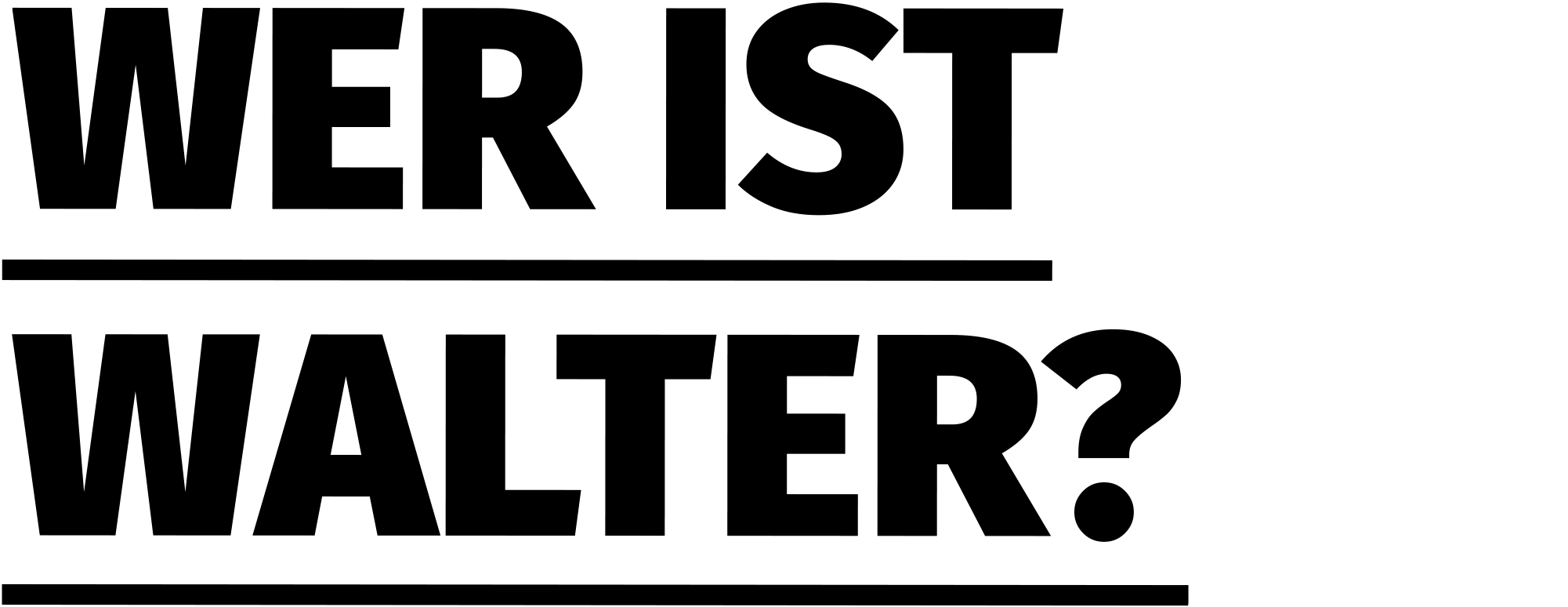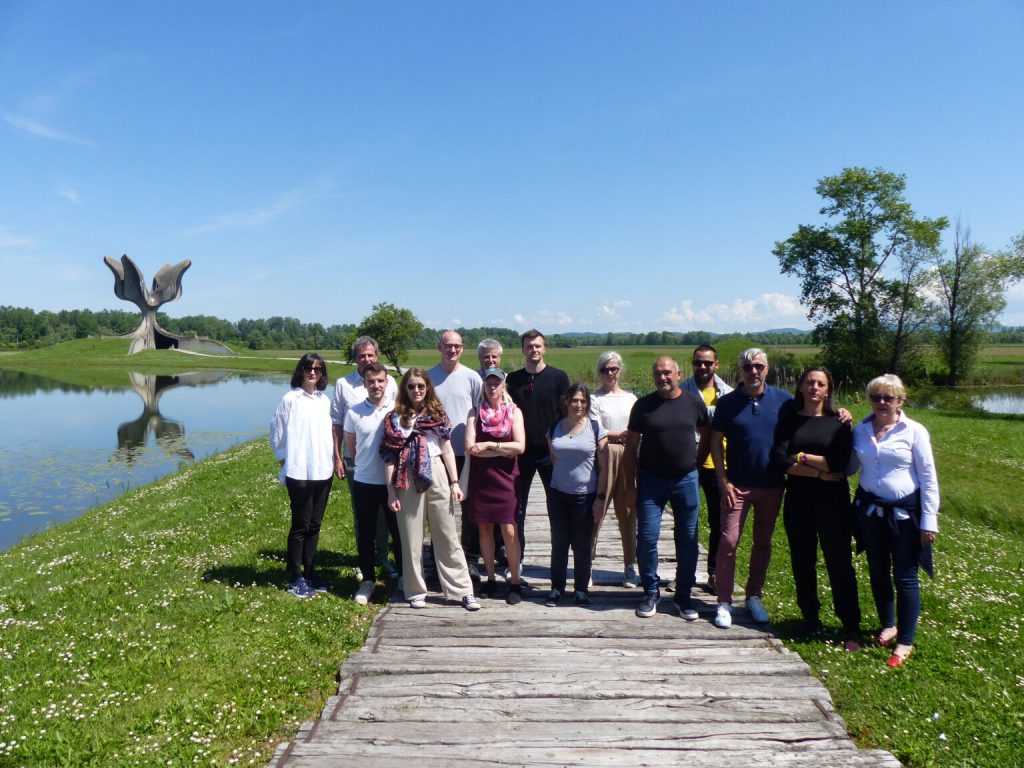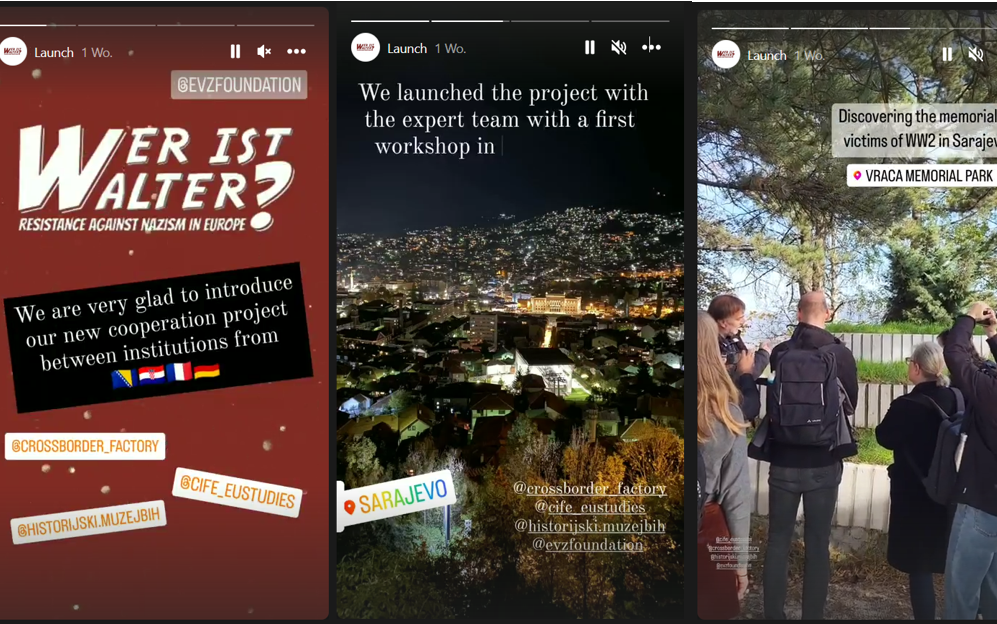It is now just over a year since the ‘Wer ist Walter’ project- and expert team met for the first time in Sarajevo to launch the project. In the meantime, we have organised two conferences and another workshop, and it was with a lot of energy and a fresh eye that we met again at the History Museum of Bosnia-Herzegovina for this 3rd workshop on December 2-3,2023.
The main aim of this workshop was twofold: to continue with the preparations of the digital platform and its 100 stories about resistance, and to work on the content and scenography of the final exhibition on the museum’s premises. We were able to count on the active contributions of our project- and expert-team over the weekend and make significant progress on both outputs.
The first morning of the workshop was devoted to the digital platform. We established a preliminary list of the 100 stories that will be presented on the platform, a mix of stories about persons, groups, activities, events, places and symbols of resistance against Nazism and fascism during World War 2 from our 4 countries. Beforehand, each member of the expert team had written one “test story” which we discussed together in order to define criteria which should be taken care of when writing the stories.
On Saturday afternoon, we explored the site of the future exhibition, which will be opened during our final conference, in July 2024, and which will be dedicated to the resistance in Bosnia and Herzegovina during World War 2, situated in its European context. The main exhibition space will be the inner court/atrium (outdoors), which provides a lot of space and possibilities, and also some challenges. One of the discussion topics was how to connect the atrium with the indoor space of the museum, for example with the “open depo”, which presents objects from the World War 2- collection of the Museum, and with the artworks which are part of the interior architecture of the former “Museum of Revolution” and which are also related to World War 2.
On Sunday, we worked in parallel groups to deepen the exhibition draft. The Team members from France and Germany compiled a list of questions about the resistance during World War 2 in Bosnia-Herzegovina. In the meantime, the Team members from Bosnia-Herzegovina and Croatia worked more in detail on the main topics and possible structure of the exhibition. In the afternoon, both groups presented to each other their results, and the compiled questions helped then to continue to work on content and structure, in order to ensure that the topics of the exhibition will be addressed in a way that will be understandable and relevant also from an international perspective.
During parts of the workshop were also present architect Sandro Agostini from Paris and designer Samina Tanovic from Sarajevo. Both have a lot of experience in designing exhibitions and their participation was a very valuable contribution to the reflection about the possible scenography for the future exhibition.
To take a break from the intensive work and document ourselves, we watched also two short British documentary movies related to Yugoslavia during World War 2: “The Star and the Sand” (1944) and “The Nine Hundred” (1944). These documentary films from the Collection of photographs, films and negatives of the Croatian History Museum – the successor of the “Museum of the Revolution of the People in Croatia” in Zagreb – were introduced to us by our Expert Team Member Nataša Mataušić who has been working for both institutions.
During the workshop, we organised also a brainstorming about the future title of the exhibition. Ideas came thick and fast, and some favourites emerged, but we won’t tell you more for the moment … Stay tuned!
You will find the full program of our Sarajevo Workshop here:
As far as the third planned result of our project is concerned – the scientific publication on the resistance against Nazism, fascism and occupation during World War 2 in Bosnia-Herzegovina, Croatia, France and Germany – we have received the texts from most of the authors, and they are currently going through the peer review process.
We are looking forward to the next steps of our project, with seven months left until the concluding conference in Sarajevo in July 2024. Along this way, our next workshop will take place in Jasenovac in May 2024, where we will work on finalising the three outputs and explore the memorial site which was built on the grounds of the largest concentration and extermination camp in the Yugoslav space during the Second World War.



